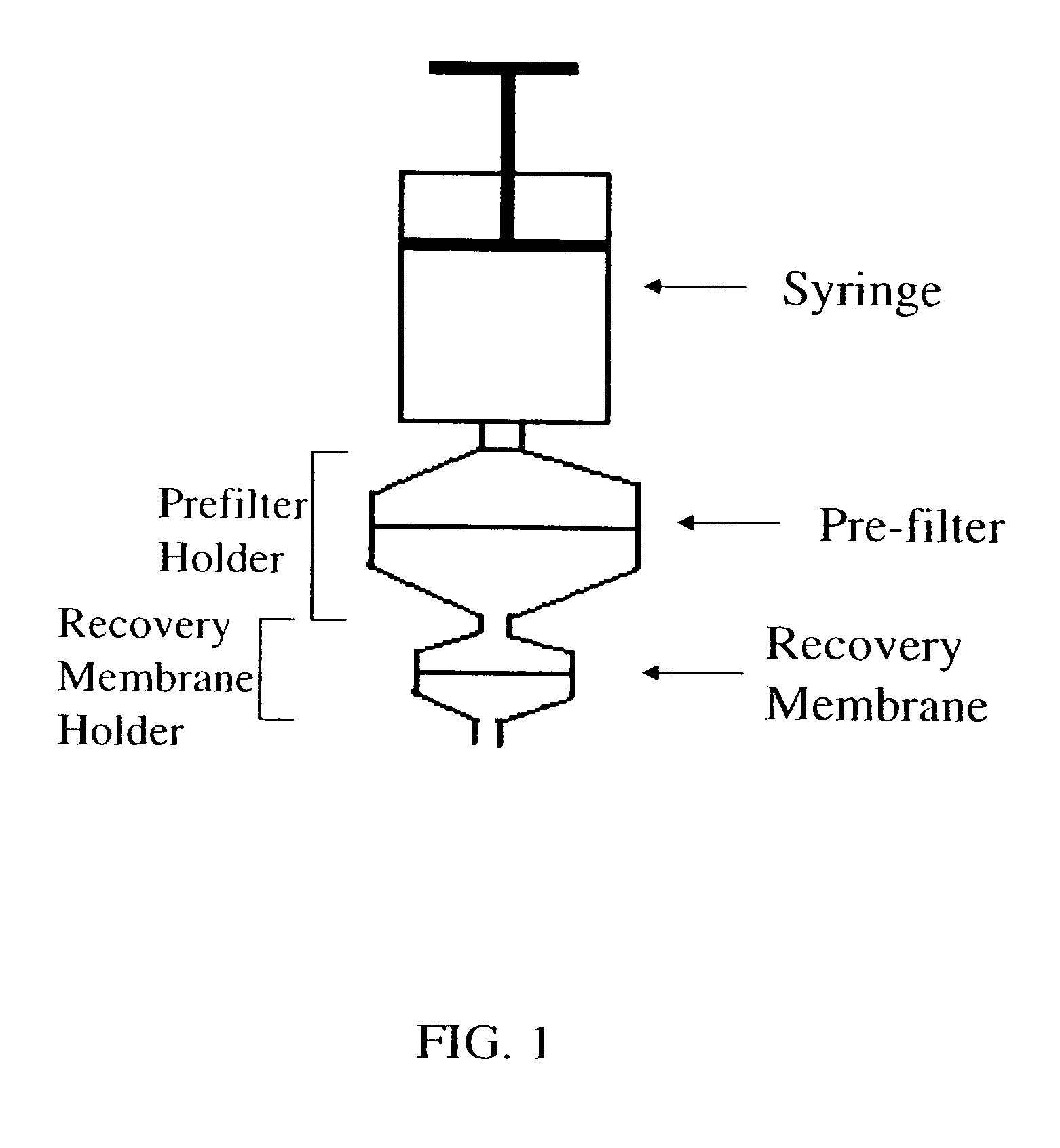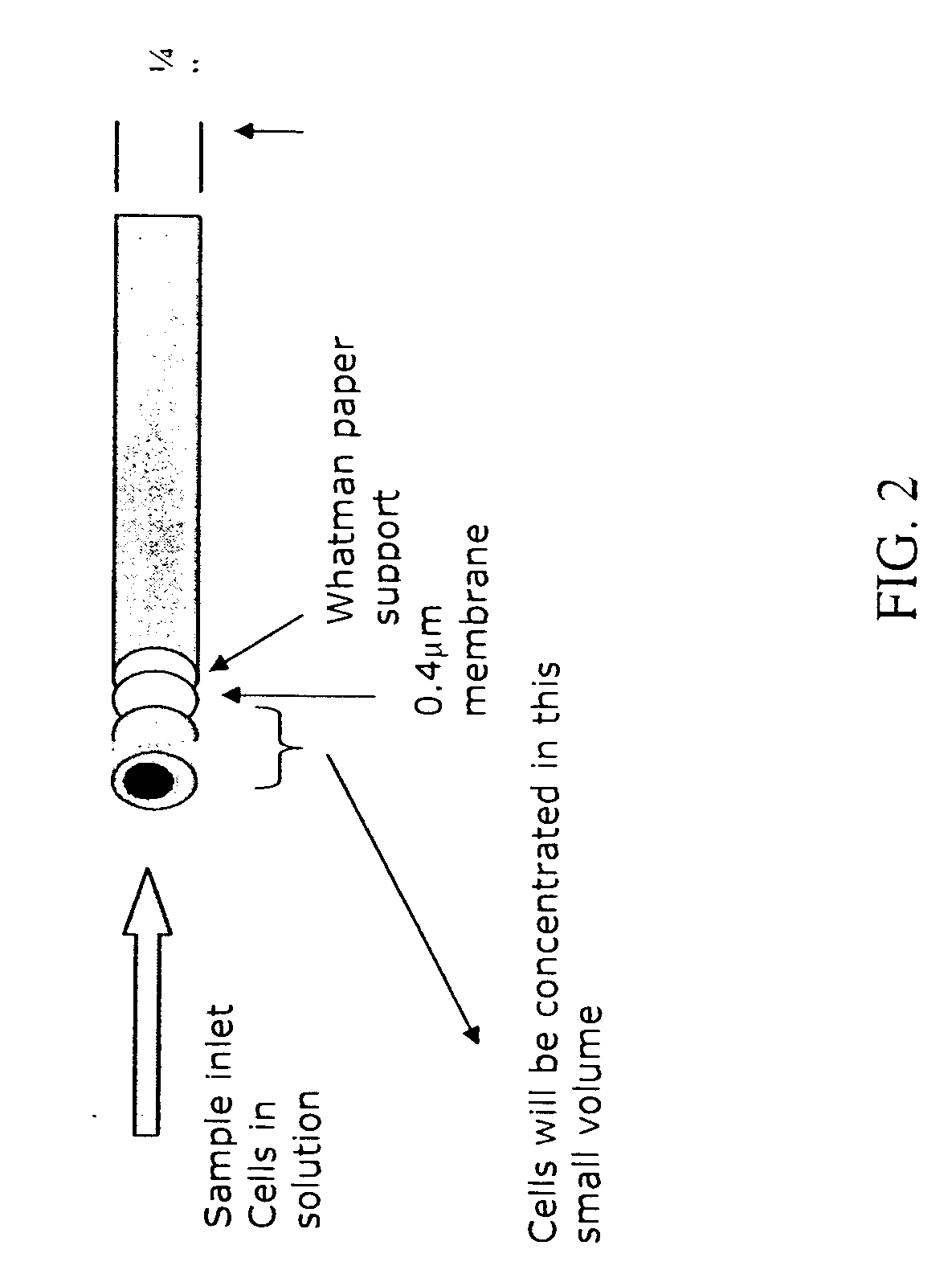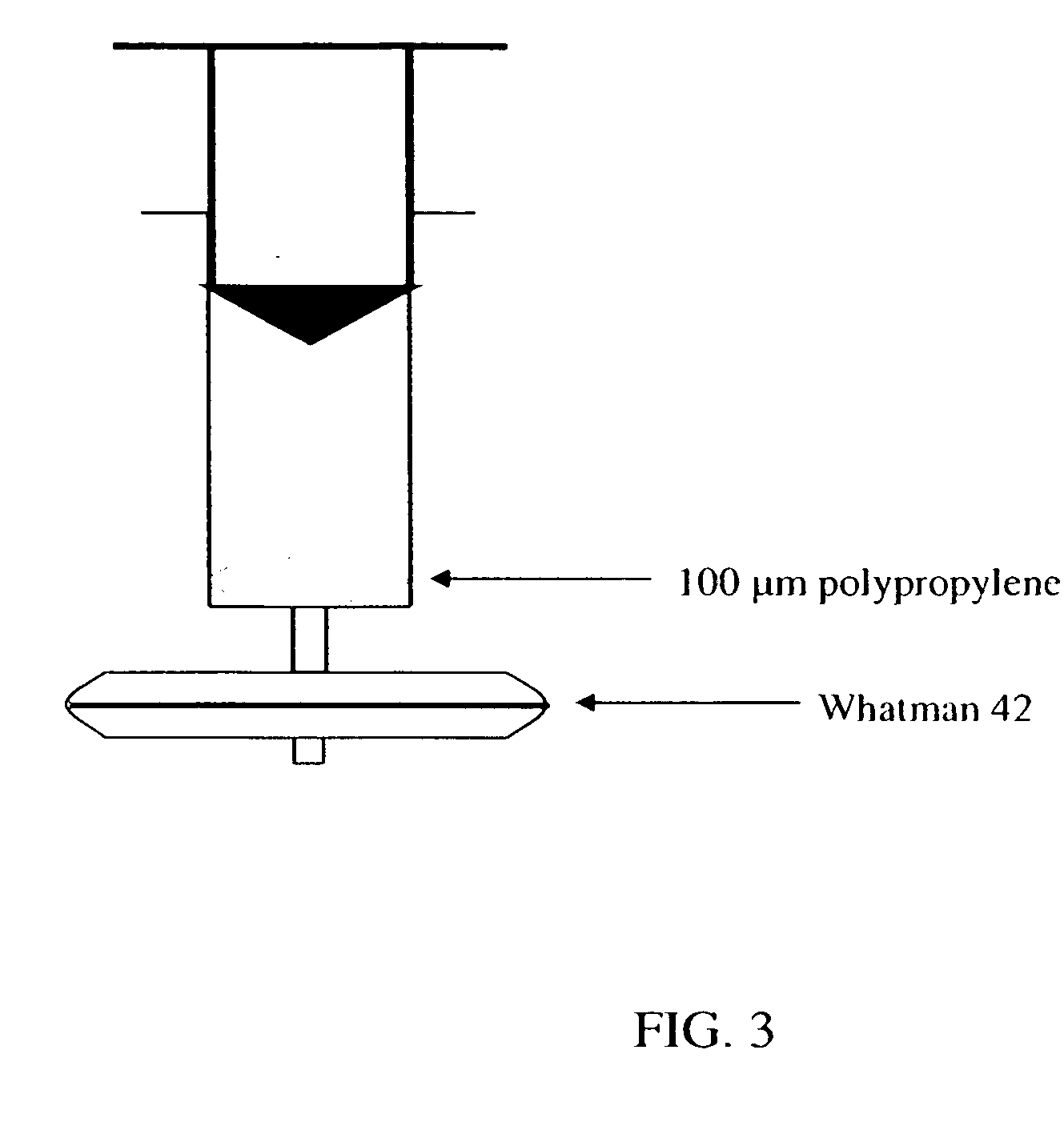Cell concentration and pathogen recovery
a cell concentration and pathogen technology, applied in the field of cancer-causing agents, can solve the problem of more complex processes
- Summary
- Abstract
- Description
- Claims
- Application Information
AI Technical Summary
Benefits of technology
Problems solved by technology
Method used
Image
Examples
example 1
[0057] This example describes optimization of membrane and buffer conditions for the recovery of Listeria monocytogenes. The results described herein were published in Chen et al., February 2005. Detection of the foodborne pathogen Listeria monocytogenes requires that food samples be processed to remove proteins and lipids, concentrate microorganisms to a detectable concentration, and recover the concentrated cells in a small volume compatible with micron-scale biochips. Mechanistic considerations addressed in this example include the roles of membrane structure, pore size, and detergents in maximizing recovery of cells from a complex biological fluid. The fluid in this case was a food sample (hotdog extract) inoculated with L. monocytogenes.
Materials and Methods
Preparation of Hotdog Meat (HDM) Broth
[0058] To produce the hotdog extract, a volume of 250 ml of phosphate buffered saline (PBS, pH=7.4) buffer was mixed with each package of hotdogs containing 250 g of meat. The PBS co...
example 2
[0080] This example describes selective capture of one living microorganism from another by an antibody immobilized on a lysine-modified polycarbonate membrane. Capture of a relatively large microbial entity (L. monocytogenes at 1 micron) by a 20-fold smaller ligand (the antibody) occurs with high efficiency, when a spacer (poly-L-lysine) reacted to the membrane's surface is derivatized with an antibody (P66) specific to Listeria. This example further demonstragtes that isolation of the food pathogen L. monocytogenes from E. coli in less than 2 hours is possible.
Materials and Methods
[0081] The method of Suye et al. (1998) coated the polycarbonate surface with poly-L-lysine (Sigma, Cat. #P6516). The amino group at one end of the poly-L-lysine, a 14.6 kD hydrophilic spacer consisting of approximately 113 lysine monomers, activates the carbonate group of polycarbonate membrane matrix. The amino group at the other end of the poly-L-lysine is activated by addition of glutaraldehyde. Th...
example 3
[0089] This Example demonstrates that rapid sample processing and concentration of microbial cells from various food products, including vegetables, is feasible using a carefully selected combination of filtration, membrane separations, and bioprocessing reagents. Such a sample preparation process could be completed in 30 minutes, drastically reducing sample prep time when compared to the conventional methods of selective enrichment, which can take up to 3-7 days.
[0090] This example also describes various procedures that can be used to optimize sample preparation so that the recovery kit described herein can be used to concentrate and recover cells from the material at hand.
[0091] One experimental setup used frequently in this example is referred to as the cell concentration and recovery kit (“CCR KiT”). The CCR KiT consisted of a 140 mL sterile syringe with luer lock outlet. The sample, including bacteria, was loaded into the syringe and the plunger replace...
PUM
 Login to View More
Login to View More Abstract
Description
Claims
Application Information
 Login to View More
Login to View More - R&D
- Intellectual Property
- Life Sciences
- Materials
- Tech Scout
- Unparalleled Data Quality
- Higher Quality Content
- 60% Fewer Hallucinations
Browse by: Latest US Patents, China's latest patents, Technical Efficacy Thesaurus, Application Domain, Technology Topic, Popular Technical Reports.
© 2025 PatSnap. All rights reserved.Legal|Privacy policy|Modern Slavery Act Transparency Statement|Sitemap|About US| Contact US: help@patsnap.com



